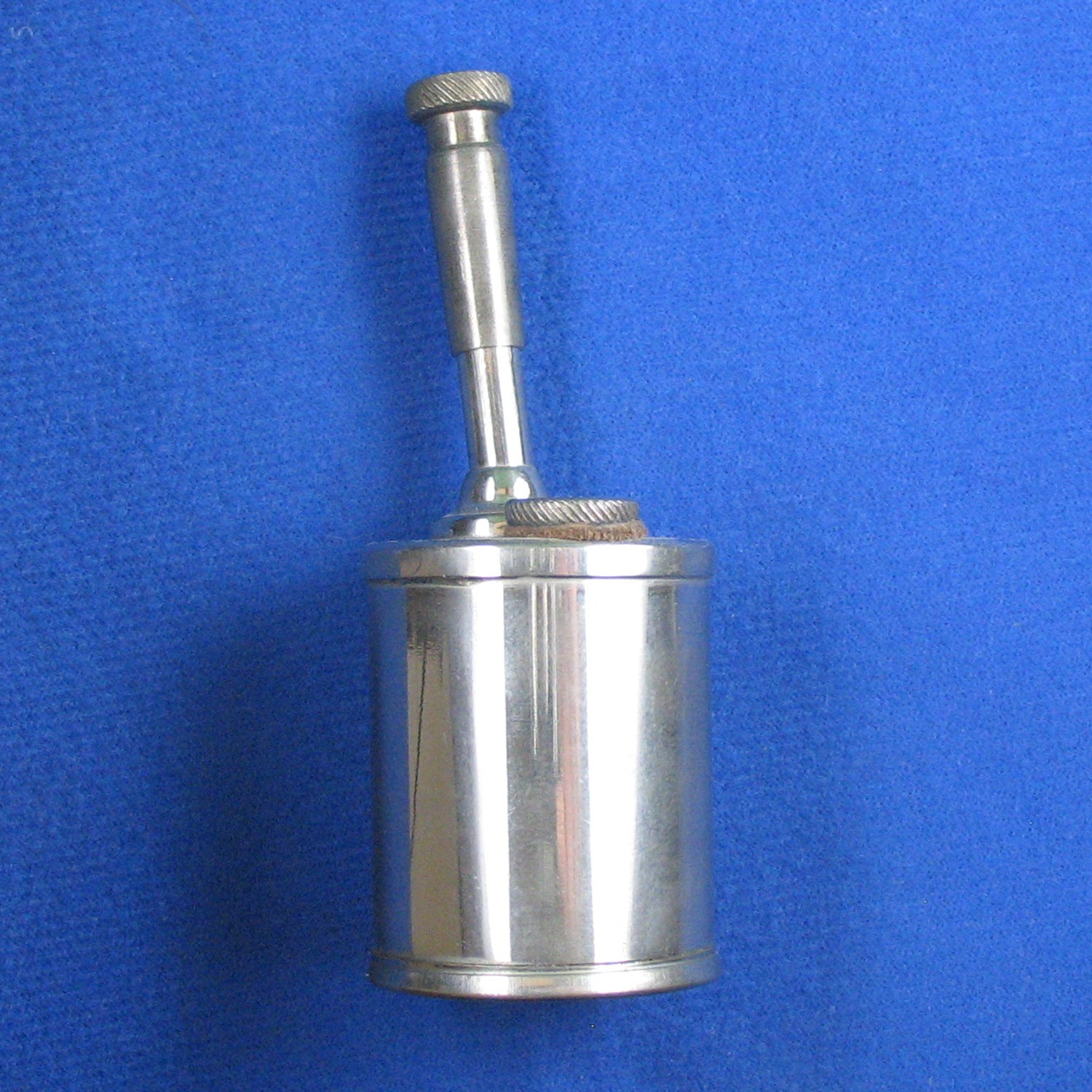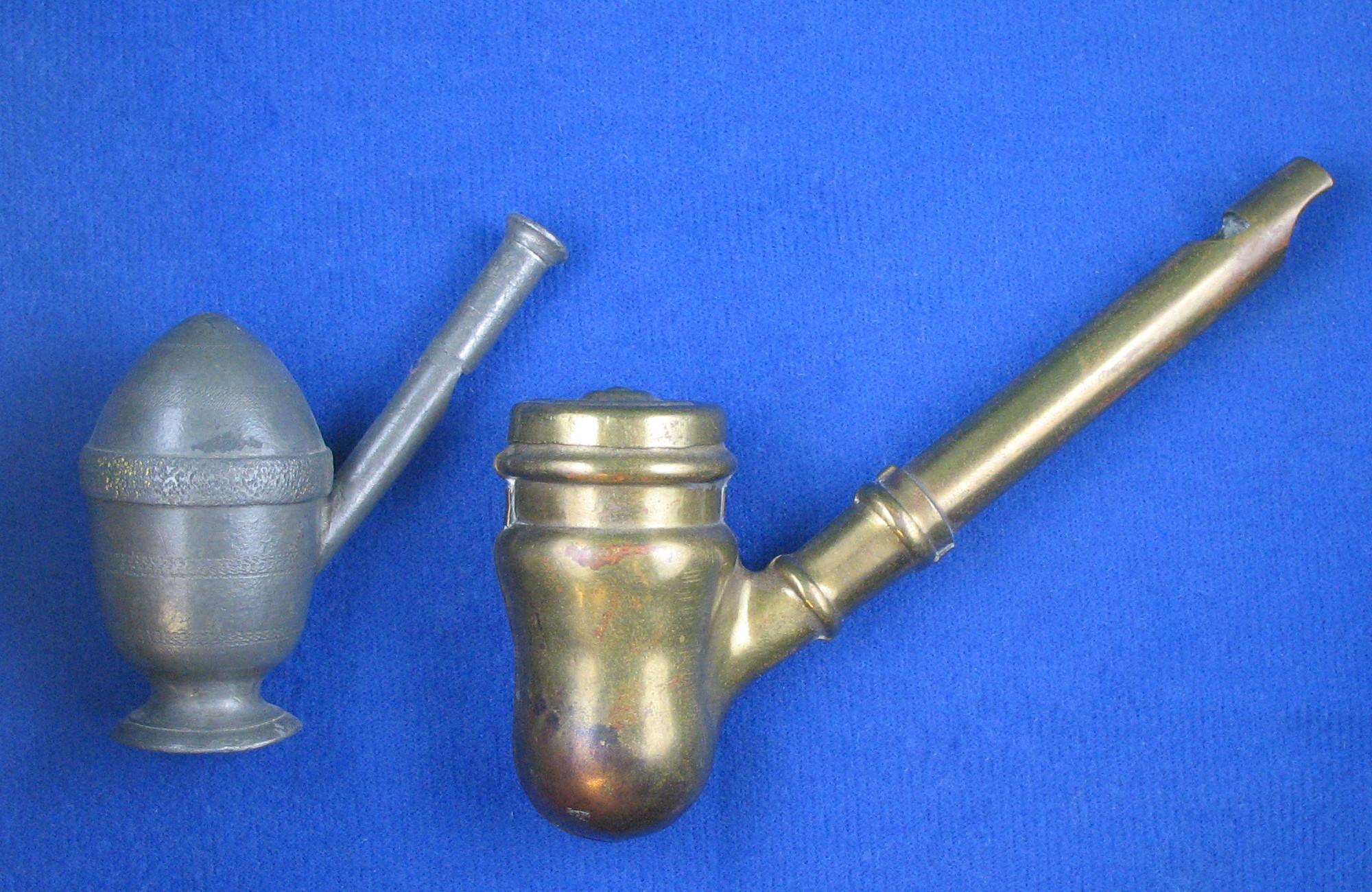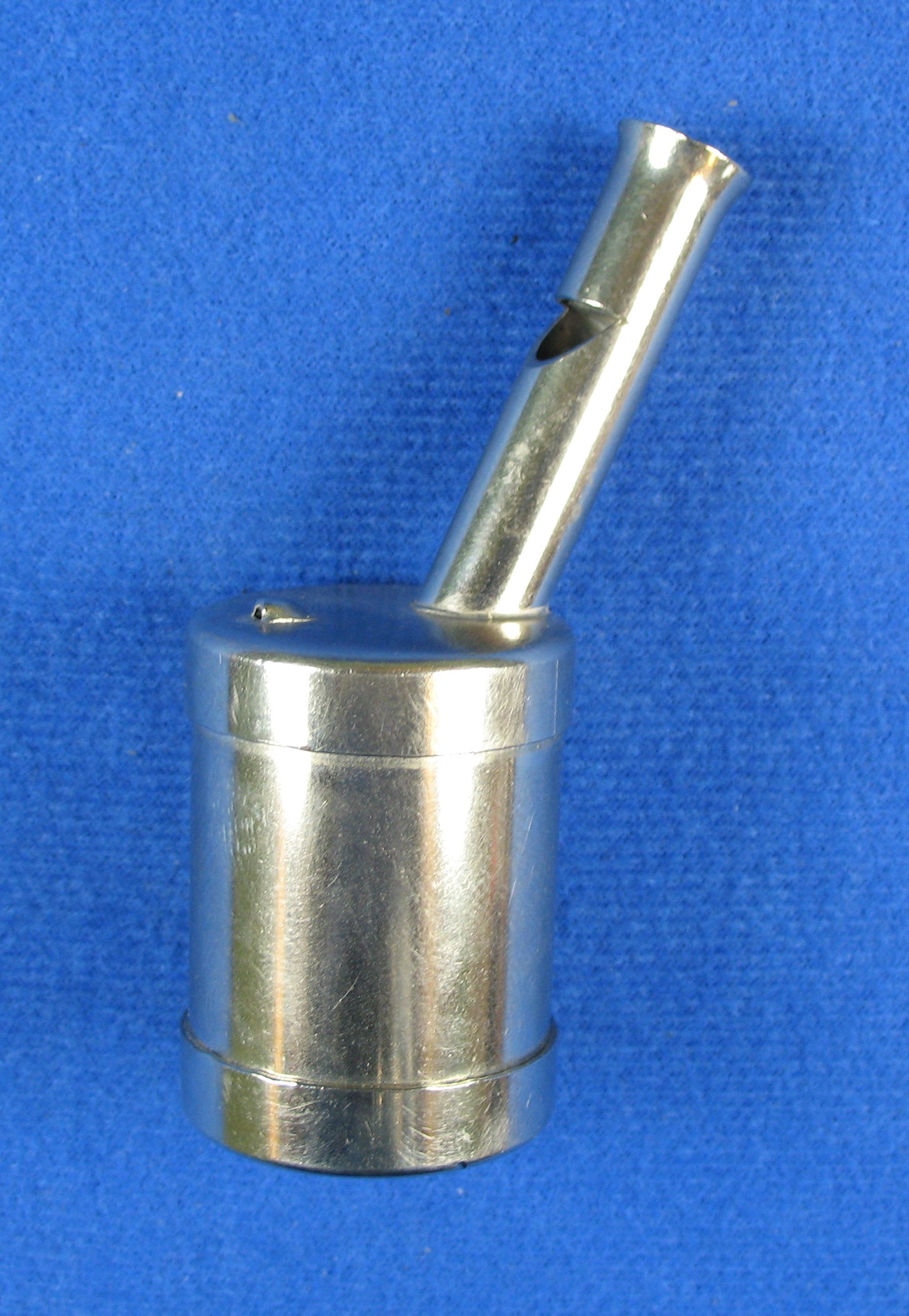Whistle Categories > Warbler Whistles

Where did warbler whistles originate?
Tankard whistles or warblers were first found amongst drummer’s traps, perhaps crude hand made models. Soon manufacturers made them in production levels and marketed then in catalogs. These were first notably found in the states and then spread to other countries such as the UK.
The obvious connection may have been used first by birders wanting to accurately imitate bird sounds. Whatever these beginnings were, they were overshadowed by the use of sound effects, and this throws our attention back to the USA.
How are warbler whistles identified?
These are identified by a tube attached to a tankard or small can of sorts that water can be poured into. Once there is a level of water inside the tankard, the results when blown will trill and correspond to a bird noise. It is up to the one filling the tankard how high they want the pitch by adjusting the water level.
The design of the warbler is so distinct that it is not easily confused with other whistles. It is a water whistle. However, they can come in a wide array of sizes and even shapes of animals.
Why were they made?
The need for bird sounds was needed just for birders perhaps to begin with. Following this comes the quite long era of sound effects for stage.
If one counts from post-civil war to the demise of silent movies, this spans over 60 years.
Piano men and more than often drummers were saddled with the responsibility of using contraptions to make the appropriate noises filling in at stage events. Ergo drummer’s traps for the stage and other entertainment such as silent movies, vaudeville, radio, and the like.
As with sirens, sliders, and skeleton whistles, these eventually became more of a toy whistle in time.


© – All photos with blue background property of The Whistle Gallery reference collection. Please contact The Whistle Gallery for permission of use of any website content. Use of photos without authorization is prohibited.










